Shortcuts:
Editors' Choice: Samsung Galaxy S21 Ultra, the Best Camera Smartphone on the Market
As of now - exactly at the first half of 2021 - the Samsung Galaxy S21 Ultra is our pick for the best camera smartphone you can buy in 2021. Note that we came to this conclusion following long-drawn discussions among our editorial team members. In fact, we believe that the Samsung Galaxy S21 Ultra is also among the best smartphones money can buy.
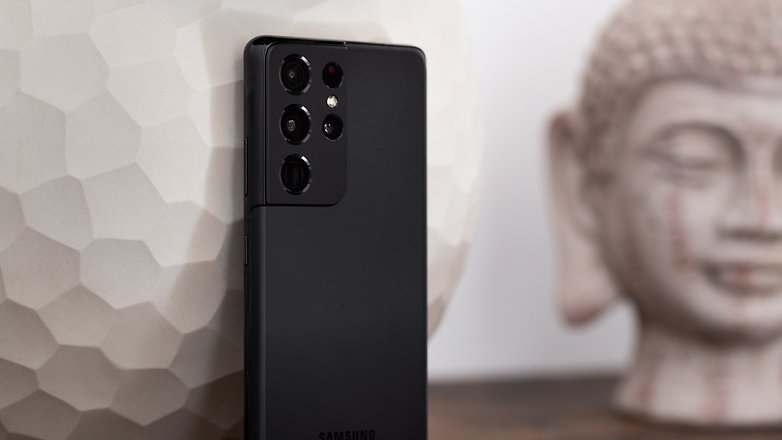
Rating |
 |
|
Pro
|
Cons
|
Camera module of the Samsung Galaxy S21 Ultra:
- Main camera: 108 megapixels at 1/1.33" at f/1.8
- Ultra wide-angle: 12 megapixels at 1/ 2.55" at f/2.2
- Telephoto: 3x with 10 megapixels at 1/ 3.24" at f/2.4
- Telephoto (2): 10x with 10 megapixels at 1/ 3.24" at f/2.9
- Front camera: 40 megapixels at 1/ 2.8" at f/2.2
- 100x space zoom, hybrid optical zoom, 8K video snap, motion view, director's eye view
- 8K video at 24fps
As mentioned in the intro, we unanimously think that as of July 2021, it is nigh impossible for any other smartphone to match the sheer camera quality and versatility offered by the Samsung Galaxy S21 Ultra. The Galaxy S21 Ultra's super-advanced camera is absolutely one of the highlights of this top-of-the-line smartphone. In addition to an improved 108-megapixel sensor, there's an ultra-wide-angle camera here, as well as two (!) telephoto cameras at once.
So zooming in at 10x magnification finally works without significant loss of quality, and you can still get pretty usable results with Samsung's 100x space zoom if you wish. The camera is versatile and also logically benefits from all the camera features Samsung introduced with the S21 series.
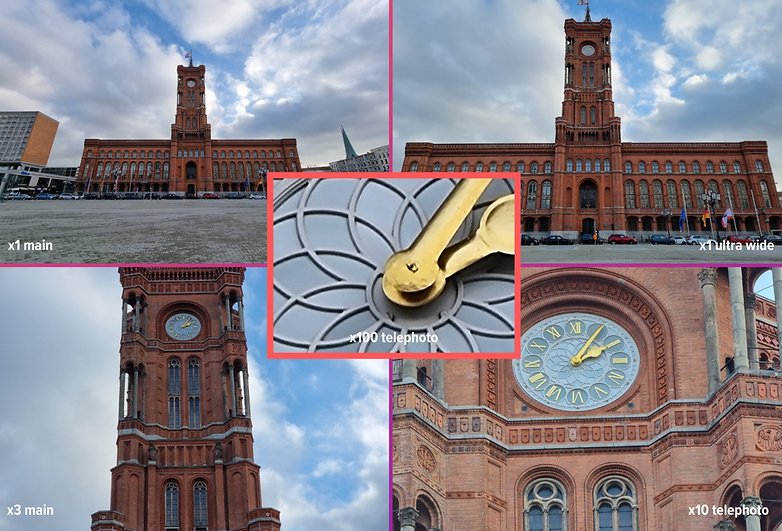
However, we wouldn't be praising the camera so highly if only the telephoto lenses performed so well and the rest fell significantly short. Therefore, we also want to talk about the main camera and the sensor for the ultra-wide-angle here.
In daylight, the main camera does exactly what we expect from a Samsung flagship: Churn out images that have excellent detail, well-managed dynamic range, and eye-pleasing color. Focusing is also much faster than in the predecessors.
When it comes to the ultra-wide-angle lens, Samsung sticks with last year's technology: it's based on a 1/2.55"-12MP sensor with 1.4-µmm pixels and uses a 13mm lens with an f/2.2 aperture that offers a 120-degree field of view. What's new here, though, is that Samsung is offering autofocus, unlike last year's models. When it comes to low-light images, we think only the Huawei Mate 40 Pro captures better night-time images.
Read our Galaxy S21 Ultra Review
The best alternatives that NextPit recommends
After the editorial selection, which is necessarily subjective and probably won't please everyone, let's move on to the rest of the selection.
Huawei Mate 40 Pro: The top alternative for the best camera smartphone
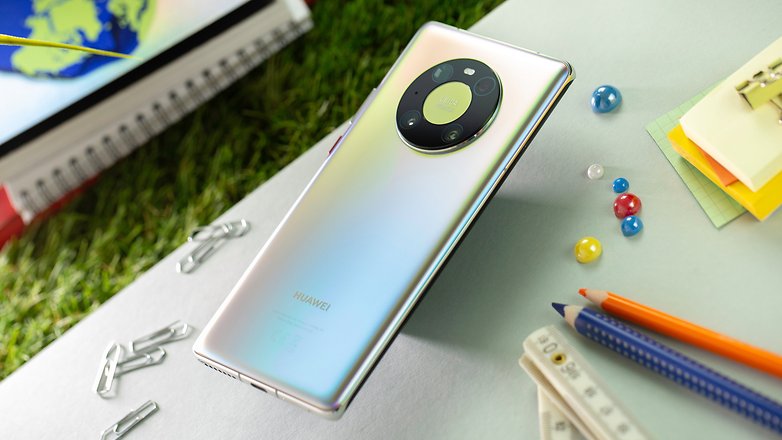
Rating |
 |
|
Pro
|
Cons
|
Camera module of the Huawei Mate 40 Pro:
- Wide-angle main lens 50 MP, f/1.9, 23 mm, 1/1.28", 1.22 µm, PDAF omnidirectional, AF laser
- Periscopic telephoto lens 12 MP, f/3.4, 125 mm, PDAF, OIS, 5x optical zoom
- Ultra wide-angle lens 20 MP, f/1.8, 18 mm, PDAF
- Video: 4K at 30/60 fps, 1080p at 30/60/120/240/480 fps, 720p at 960 fps, 720p at 3840 fps,
- 13 MP, f/2.4, 18 mm ultra-wide-angle selfie lens
- 3D ToF sensor
- Video: 4K at 30/60 fps, 1080p at 30/60/240 fps
Well, we know it's a bit tricky getting the Huawei Mate 40 Pro in the US given the sticky situation between Huawei and the US government. However, we had to include this phone as our top mention in this section because of its sheer awesomeness. Almost a year since it was announced, it remains one of the most powerful camera smartphones money can buy in 2021.
It offers the same camera module as the excellent Huawei P40 Pro, with a lower resolution at the ultra-wide-angle range (20 MP instead of 40 MP). The 'periscope' telephoto lens nearly outperforms the competition, causing almost no loss in quality at 2x, 5x, and 10x magnification. Beyond that, the drop in detail is noticeable but remains much better contained than competitors. While it has more or less the same performance as the P40 Pro, the Huawei Mate 40 Pro has the advantage of being equipped with the latest, more powerful Kirin 9000 SoC as well as a 90 Hz OLED waterfall display.
Everyday life with a Huawei smartphone restricted by the US ban is quite doable, as we were able to explain in our EMUI 11 review. That said, the lack of Google services is still a barrier to purchase for many users, I'm aware.
Click here for the review of the Huawei Mate 40 Pro
Samsung Galaxy S20 Ultra: An affordable alternative to the S21 Ultra
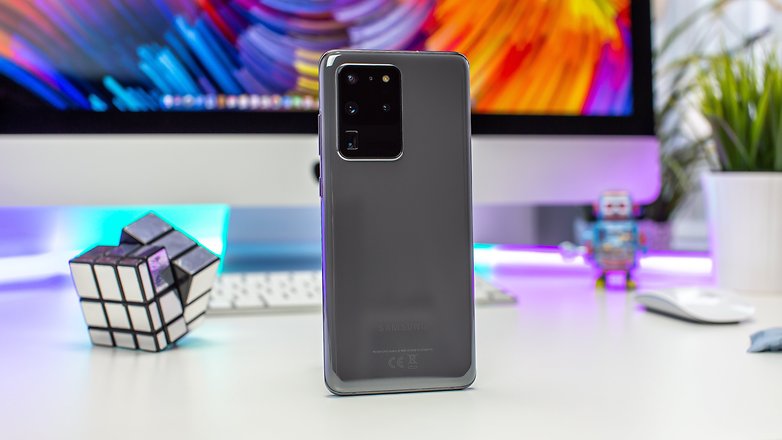
Rating |
 |
|
Pro
|
Cons
|
The camera module of the Samsung Galaxy S20 Ultra:
- 108 MP, f/1.8, 26mm, 1/1.33", 0.8µm, PDAF, OIS wide-angle main lens.
- 48 MP, f/3.5, 103mm (telephoto periscope), 1/2.0", 0.8µm, PDAF, OIS, 4x optical zoom, 10x hybrid zoom
- 12 MP, f/2.2, 13mm (ultra-wide), 1.4µm, super-stable video
- 0.3 MP, TOF 3D, f/1.0, (depth).
- Video: 8K to 24fps, 4K to 30/60fps, 1080p to 30/60/240fps, 720p to 960fps
- 40 MP, f/2.2, 26mm, 0.7µm, PDAF wide-angle lens with self-timer
- Video: 4K at 30/60fps, 1080p at 30fps
If you simply do not have enough cash to splurge on the Galaxy S21 Ultra, it is advisable you settle for the now cheaper - but nearly as good - Galaxy S20 Ultra from last year. The S20 Ultra gets a 108MP primary sensor (Samsung Isocell HM1). This sensor combines not four, but nine pixels into one "superpixel".
Above the 108-megapixel main sensor, Samsung has an ultra-wide-angle module. The native resolution is 12 MP and the field of view is one of the widest among today's smartphones at more than 120 degrees. The lowest of the three modules is the famous Sony IMX586 48 MP sensor with a periscopic zoom that provides 5 x 5 optical magnification. This is a far better than average configuration for a telephoto lens.
As long as you don't go beyond 5x magnification, the Samsung Galaxy S20 Plus's zoom is effective and maintains good detail, but if the smartphone crops in the base image to offer magnification levels, you'll lose detail at 10x magnification. So the "100x" zoom is nothing more than a superfluous selling point.
Click here for the review of the Samsung Galaxy S20 Ultra
iPhone 12 Pro Max: The people's choice!
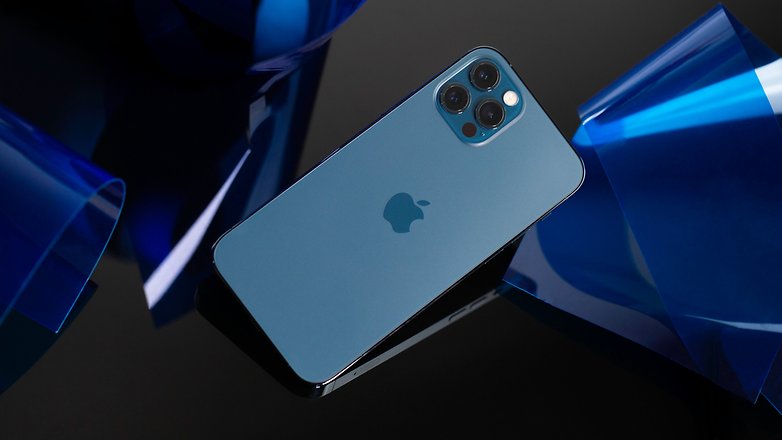
Rating |
 |
|
Pro - Camera test pending |
Cons - Camera test pending |
The iPhone 12 Pro Max camera module:
- 12 MP wide-angle prime lens, f/1.6, 26 mm, 1.7µm, dual-pixel PDAF, IBIS stabilization
- Telephoto lens 12 MP, f/2.2, 65 mm, 1/3.4", 1.0µm, PDAF, OIS, 2.5x optical zoom
- 12 MP, f/2.4, 120˚, 13 mm, 1/3.6" ultra-wide-angle lens
- ToF 3D LiDAR sensor
- Video: 4K at 24/30/60 fps, 1080p at 30/60/120/240 fps.
- Selfie wide-angle lens 12 MP, f/2.2, 23 mm, 1/3.6" selfie lens
- 3D depth sensor
- Video: Video: 4K at 24/30/60 fps, 1080p at 30/60/120/240 fps.
The main difference between the iPhone 12 Pro and iPhone 12 Pro Max is the size of the main sensor, which is 47 percent larger on the Pro Max. This larger sensor logically offers better dynamic range, better low-light performance, and overall better image quality.
But the big highlight of the iPhone 12 Pro Max, according to my colleague Julia, is that for the first time, the iPhone offers 2.5x optical zoom (Apple calls it a "5x optical zoom range"), HDR 3. The phone also takes impressive photos in low light thanks to the LiDAR scanner.
One difference from the 11 Pro Max is the night mode available in the ultra-wide angle mode. With iOS 14.3, Apple has also included the new Apple ProRAW photo format, which allows for more thorough post-processing of iPhone images.
In fact, Apple claims that the Pro Max's low-light performance is 87 percent better than older devices. The larger physical size of the iPhone 12 Pro Max has also allowed the telephoto zoom to increase to 65mm. This means that the 12 Pro Max has a very wide zoom range, from 13 mm ultra-wide to 65 mm zoom.
It also uses sensor stabilization via IBIS or "in-body image stabilization" technology, which is found on traditional hybrid cameras. The sensor can make 5000 micro adjustments per second, and this stabilization means you can get up to two seconds of hands-free exposure in low light.
Recently, we invited the NextPit community to take part in a blind test to compare and rate photos from smartphone cameras. And, what can we say: the iPhone 12 Pro Max saw off the entire Android competition. Reason enough to include the iOS smartphone here as a high-end alternative in the list.
Click here for the review of the iPhone 12 Pro.
OnePlus 9 Pro: OnePlus can finally do camera!

Rating |
 |
|
Pros
|
Cons
|
The camera module of the OnePlus 9:
- Main wide-angle 48 MP: Sony IMX789, 1/1.43" (sensor size), 2.24μm (pixel size with 4-in-1 binning), EIS/OIS, f/1.8 aperture, 23mm equivalent
- 50 MP ultra-wide: Sony IMX766, 1/1.56" (sensor size), free-form lens, f/2.2 aperture, 14 mm equivalent
- Telephoto 8 MP: f/2.4 aperture, 1.0μm (pixel size)
- 2 MP monochrome
- Dual LED flash
- Front camera: Sony IMX471, 16 MP, f/2.4, 1.0 µm, fixed focus
- Multi-autofocus: PDAF+CAF for all pixels, omnidirectional
- 8K video at 30 FPS, 4K video at 30/60 FPS
- Super Slow Motion: 720p at 480 FPS, 1080p at 240 FPS
- Time Lapse: 1080p 30 FPS, 4K at 30 FPS
We don't need to discuss the fact that OnePlus can build excellent smartphones. But then, most of the time, it was the camera that couldn't quite keep up with the competition's top models. OnePlus has recognized this and has taken it upon itself to now deliberately focus on improving the camera sensors.
For this purpose, the Chinese manufacturer has tapped Hasselblad, a true camera legend, for a joint partnership. The OnePlus 9 Pro already benefits from this, although in this case the collaboration between the companies is still limited to the software side.
The highlight of the 48MP main sensor is support for native dual ISO, 12-bit RAW, and DOL-HDR. DOL stands for "Digital Overlay" and means that multiple shots are taken at different exposures and then combined to optimize the dynamic range. As far as daylight shots go, we have to say we were blown away by how confidently the complex dynamic ranges were handled.
Normally, we knew from previous OnePlus flagships this annoying tendency to draw a veil over shots, usually due to too aggressive smoothing. The AI clumsily tried to reduce digital noise, and one of the key improvements in the OnePlus 9 Pro is the near-total absence of this haze.
If we look at night and wide-angle shots, we'll notice that the OnePlus cameras are just not yet where Huawei and Samsung are, for example. The zoom also falls behind the rest of the camera features.
Click here for the review of the OnePlus 9 Pro
Google Pixel 4a 5G: The best mid-range cameraphone
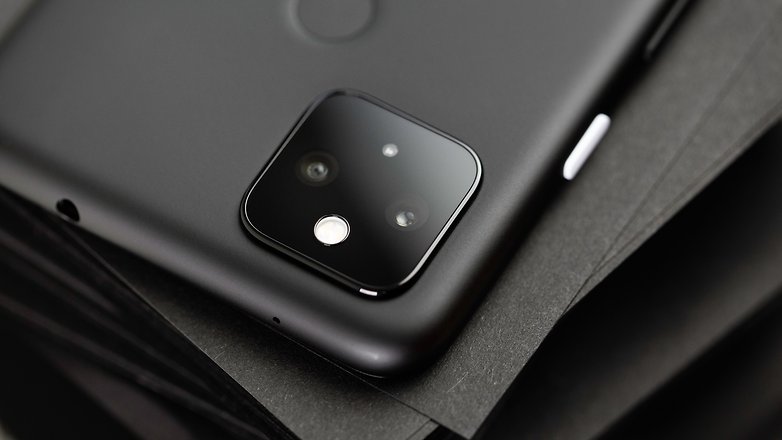
Rating |
 |
|
Pro
|
Cons
|
The Google Pixel 4a 5G's camera module:
- 12.2 MP wide-angle lens, f/1.7, 27 mm, 1/2.55", 1.4µm, dual-pixel PDAF, OIS
- 16 MP ultra-wide-angle lens, f/2.2, 107˚, 1.0µm
- Video: 4K at 30/60 fps, 1080p at 30/60/120/240 fps
- 8 MP, f/2.0, 24 mm, 1/4.0", 1.12µm wide-angle selfie shooter
- Video: 1080p at 30 fps
The Google Pixel 4a 5G is a smartphone that offers the main qualities of the Pixel flagship but at a more affordable price. Google has added a wide-angle sensor to the famous 12.2-megapixel main camera, instead of a telephoto lens like on the Pixel 4.
In his review of the smartphone, my colleague Ben found that the camera duo on the back delivers very good to excellent results and Google manages to maintain the performance level of its predecessors. Especially with the cheaper Pixel 4a 5G, it's a real joy to use, because for little money you get a lot of beautiful and crisp memories.
The brightness and contrast of the images are controlled separately with Dual Exposure Management and White Balance, allowing you to control both the brightness of the images and the intensity of the HDR effect. Instead of just telling the smartphone to optimize the dynamic range, you control the efficiency of the dynamic range, which makes the dark areas more or less prominent. It's a useful tool for creating images that almost makes you forget there's no Pro mode, including controlling exposure time.
Click here for the review of the Pixel 4a 5G
Samsung Galaxy A72: Samsung's mid-range alternative
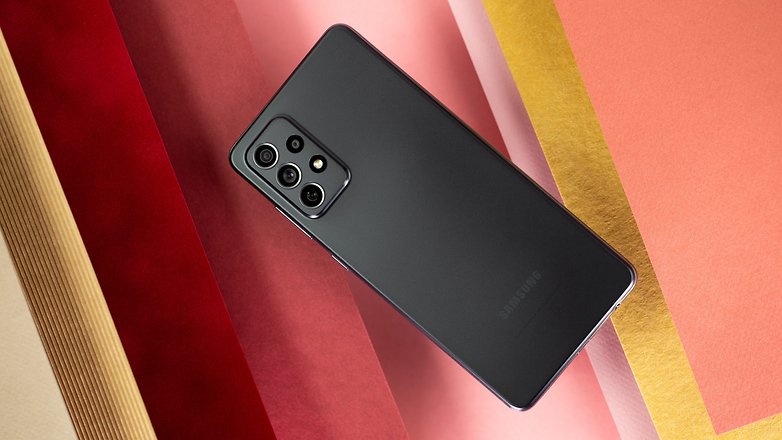
Review |
 |
|
Pro
|
Cons
|
The camera module of the Samsung Galaxy A72:
- Main lens: 64MP with f/1.8 and OIS
- Ultra wide angle: 12MP with f/2.2
- Telephoto lens (3x): 8MP with f/2.4
- Macro: 5MP with f/2.4
- Selfie: 32MP without AF
- UHD 4K (3,840 x 2,160 pixels) @30fps
- Slow motion: 240fps @HD
The Samsung Galaxy A72 is yet to arrive in the U.S - but we have already managed to review it in Europe. The Galaxy A72 impressed Camila in the review, especially in terms of media consumption. This is not the least due to the 6.7-inch Super AMOLED display with its refresh rate of 90 hertz. The battery capacity is also larger compared to the A52 5G. Samsung uses a 5,000 milliamp-hour battery in the A72.
This makes it interesting for Samsung fans who don't want to pay four-digit sums for a smartphone. The A72 is available for as little as 449 Euros.
But the device is also interesting for our overview of the most recommendable camera smartphones. The 64 MP main cam with optical image stabilization is a really nice all-rounder that not only convinces in good lighting conditions, but also in night shots, for example.
Additionally, Samsung should be congratulated for the decision to omit a rather pointless depth sensor and offer a telephoto sensor instead. The optical magnification is a nice surprise, especially in this price range, and so Samsung has put together a really nice overall package for the mid-range.
Read the review of the Samsung Galaxy A72 here.
HDR and night mode: The importance of software processing
All your smartphone photos are subject to software image processing by the device's AI. This processing can be more or less aggressive and can affect the image quality, which may be different from what you saw with the naked eye at the time you took the photo.
HDR
HDR or High Dynamic range is the ratio between the darkest and lightest areas of a scene. The lower the dynamic range of a photo sensor, the more difficult it becomes to correctly see elements at opposite ends of the range at the same time.
Specifically, this manifests itself in skies that are too white and burned by light, or buildings that are too dark and drowned in shadow, which greatly affects exposure and/or contrast. So you'll never be able to have all the elements of a scene with perfect exposure at the same time in one shot.
With HDR, the smartphone takes several consecutive shots, each with a different exposure, to combine them and get a "balanced" rendering. However, this feature can also be problematic if you move too much during the exposure - the shot will be blurry.
It's more or less the same process smartphones use for their famous night mode.
Automatic scene detection
The first form that software processing can take is also the most basic: scene detection. The smartphone automatically detects elements (sky, grass, face) in the shot and adjusts the image processing according to the identified elements. For example, the blue of the sky or the green of the vegetation in a landscape photo can be emphasized more, and the face in a portrait photo can be sharpened.
AI: "Deep Learning"
The AI of a Google Pixel or a Deep Fusion mode on the iPhone are even more advanced, integrating the notion of Deep Learning into image processing. Specifically, to beautify your image, the smartphone compares it to a huge database of similar shots to adjust settings and suggest the appropriate rendering for that type of shot.
While this feature is popular with newbies who swear by automatic mode, it can be frustrating if the processing is too aggressive and decides for the photographer what is or isn't beautiful in a photo.
Samsung, for example, has long had an unfortunate tendency to oversaturate colors, resulting in images that are anything but natural. Night mode in Google Pixel causes night photos to lose their natural look, giving the impression that the photos were taken during the day (e.g. a sky that is too bright).
The aperture explained
Strictly speaking, the terms aperture (also called f-number) and f-stop ratio are generally used incorrectly. The correct term would be "aperture ratio", which describes the focal length of the system in relation to the diameter of the entrance pupil of the lens.
This ratio is usually expressed as a fraction in the notation "f/1.8" or "1:1.8". It's fairly counter-intuitive, but the larger the aperture, the smaller the number after the f. Thus, f/16 is a small aperture, while f/1.4 provides a larger aperture.
Aperture is particularly useful in conjunction with sensor size to play with background blur and low-light performance. The larger the aperture - and therefore the amount of light captured - the blurrier the background behind the subject being photographed. This is a parameter that can be interesting to highlight in portraits but is also a good indicator of low light performance.
The emphasis is more on light intensity. An improvement from F2.4 to F1.7, for example, means that the smartphone has twice as much light to shoot with. This, in turn, paves the way for optional lighting:
- A photo taken at half ISO sensitivity. Half sensitivity means less amplification of the image signal and therefore less image noise.
- A photo taken at half shutter speed. This reduces the risk of camera shake when moving quickly or in low light.
Optical zoom and focal length
To understand what optical zoom really means in a smartphone, first look at focal lengths. The focal length of a lens indicates the distance between the lens and its focal point, where all the light rays converge.
An optical system with a very long focal length therefore focuses the light very far behind the lens. A long focal length therefore means a small angle of view - or in more colloquial terms, a "strong zoom".
If you really want to know how far a smartphone can zoom without compromising image quality, three values are important:
- The focal length of the telephoto lens in 35mm equivalent.
- The image sensor under the same telephoto lens
- The aperture of the telephoto lens
The telephoto focal length in 35-mm equivalent indicates the smartphone's ability to zoom in on distant subjects through optical magnification. If the ratio between the fancy magnification and the actual optical magnification goes too far, the phone has to digitally zoom in - and the image quality suffers.
This is where the image sensor under the telephoto lens comes into play: the larger the sensor, the more light it captures - and the better the image quality. A very large image sensor not only delivers better images when optically magnified by the lens, but also provides more room for the digital zoom.
Finally, the aperture of the telephoto lens also plays a role. The aperture describes the amount of light available to the sensor for the image. In general, the more light, the less noise and the lower the risk of camera shake. Telephoto lenses in smartphones in particular are notoriously weak on these points.
What is the optical zoom?
A focal length in 35mm equivalent defines exactly the size of a given object imaged on the sensor at a given distance from the camera. Now, an optical zoom means that the camera is able to achieve different image angles or image sizes by varying the focal length.
Early photo smartphones with two lenses were usually equipped with a dual optical zoom - the focal lengths of the two lenses were about 25 and 50 millimeters. Then came the increasingly powerful telephoto lenses, and the double zoom eventually became an "x5" in the camera application.
Then, when the ultra-wide-angle lens made its way into the great mass of LG smartphones, the gigantic angle of view was silently referred to everywhere as "x0.5" or "x0.6" - that is, 0.5x zoom to the main camera, halved.
The Samsung Galaxy S20 Ultra, for example, optically renders focal lengths equivalent to 13 to 103 millimeters - and therefore has an optical zoom of about x8. It's interesting that this number is not on the spec sheet.
In short, a 3x optical zoom means, for example, that the longest focal length of the camera system divided by the shortest focal length is exactly three. The Samsung Galaxy S20 Ultra has eight times more optical zoom.
Why is the 100x zoom a gimmick?
So where does the "x100" come from that a Galaxy S20 Ultra wears so proudly? Logically, for a 100x optical zoom, a smartphone should cover a focal length range of 13 to 1300 millimeters in 35mm equivalent.
The answer to the question "where does 100x come from?" is simple: from the imagination of Samsung's product managers. Unlike the optical zooms of "real" cameras, this "x100" has absolutely nothing to do with the optical capabilities of the camera system. Instead, Samsung has chosen a fantasy value as the upper limit for the camera.
Specifically, smartphones are technically limited by their size, and more importantly, the size of their camera modules, and therefore cannot offer a zoom comparable to that of an SLR, with a set of progressive lenses within the same lens, in short, a true "optical" zoom.
In reality, smartphones don't zoom, they play with their multiple lenses. Most models currently come with a wide-angle main lens and a telephoto lens with a different focal length.
How did NextPit choose the best photo smartphones?
As explained in the introduction, this list is arbitrary as it is based on the preferences of the author (in this case me) and the rest of the editorial team (the list is discussed among all testers).
We decided to select the best photo smartphones on the market in 2021 based on several categories: the editors' choice or the best ever, the best value for money, the most affordable, with possibly the best alternatives.
But the goal is not to sequence the choices too much. Buying a smartphone is the product of multiple buying criteria. Rarely do people choose their smartphone based on a single criterion like battery or screen.
As for a test, this list is the product of several subjectivities but is always partially supported by objective and verifiable elements. We also remain attentive to the community by taking into account the recommendations of readers in the comments, which are incorporated into the selection.
Specifically, only models that have already been tested are selected. The smartphone is placed in the context of the current market situation, taking into account possible price cuts, the release of new competing models, availability for purchase, etc. If a model is not available, it will be replaced by a new one.
What do you think of this selection? Which models do you think we have forgotten and should be included? Do you find the advice and methodology sections useful? Give us your feedback in the comments!
Read More Open link https://ift.tt/3m79mJa
0 Response to "The best smartphone cameras in 2021"
Posting Komentar